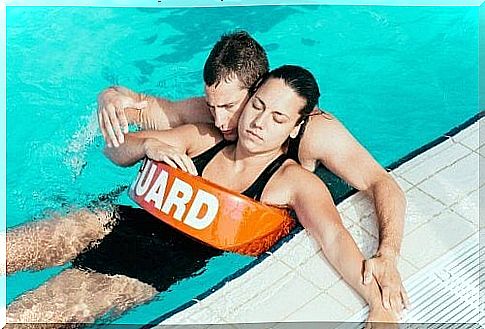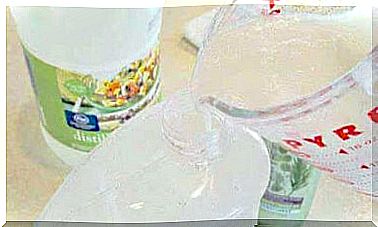Secondary Drowning: Symptoms

It could happen that in the hours following a start of drowning, symptoms arise in which it is important to intervene as soon as possible. It could be a secondary drowning or after swimming. Both occur out of the water.
Below we will examine some details that will make us better understand this little-known risk; in this way, in the event that this situation arises, we will be able to act promptly to avoid more serious consequences.
A little known risk
There have been some cases in which after having lived a traumatic experience in water and after having even thought of having overcome it, symptoms have arisen that have even led to death. Many of these cases have occurred in children.
We are talking about the drownings that happen out of the water. Symptoms can appear hours or even days after being in the water with a corresponding resuscitation procedure.
Secondary and dry drowning initially affect the lungs, later the consequences can affect other body functions. It is not our goal to cause unnecessary fear or worry, but we do want to report some of the signals the body gives following incidents like these. In this way, you will be able to recognize them and in case it is necessary you can head promptly to the emergency room.
What is secondary drowning and why it occurs
According to a study conducted in the United States, 75% of secondary drowning cases involve children under the age of 5. It can also occur in adults who have experienced a water accident or who have had to deal with sudden currents.
When a person experiences an event close to drowning, it can happen that water enters the lungs before the vocal cords close and prevent its passage inside. The result is acute pulmonary edema.
Types of drowning
Dry drowning occurs when the trachea becomes inflamed causing a spasm in the vocal cords, which close and prevent breathing. Secondary drowning occurs when the body fails to eliminate carbon dioxide due to fluid that has accumulated in the lungs after an experience of the drowning principle.
With the presence of water in the pulmonary alveoli, oxygen cannot be exchanged through the blood and the heart begins to slow down. Secondary drowning can occur up to 76 hours after the drowning episode. There are cases in which the symptoms appeared even after three days.
Secondary drowning symptoms

It may seem like everything is fine after the person gets out of the water, but that’s not always the case. It is therefore essential to pay attention to the following symptoms :
- Respiratory difficulties
- Constant cough
- He retched
- Unusual sleepiness and tiredness
- Shortness of breath
- Temperature
- Changes in behavior, evident in increased irritability or lack of energy (this occurs when less oxygen reaches the brain)
What to do if any of these symptoms appear
In the event of a drowning after swimming, it is essential to go to a doctor urgently. He will take the necessary measures. If after an initial examination he diagnoses that there has been a mild drowning, he is likely to recommend keeping the patient under observation.
If the situation is more serious, a chest x-ray will be done to make sure there is no pulmonary edema. The administration of oxygen could be considered.
To prevent

When it comes to children, pool or sea surveillance is very important. While playing, special attention must be paid to their movements to prevent them from abruptly ingesting water. It is also advisable for the child to learn to swim in the first four years of life, so that he can lose his fear of water.
In the case of a drowning principle in an adult, it is necessary to keep him under observation for the next 72 hours after the event. We remind you to pay particular attention if some of the symptoms mentioned above occur.
Know and observe secondary drowning to assist
Water games and swimming are common recreational activities in the summer. However, they are not without dangers. For this reason it is very important to know the symptoms of secondary drowning.
Being vigilant will help us to prevent an opportunity for recreation from ending in tragedy. Knowledge is the first step to help other people and ourselves in the face of injury situations.









